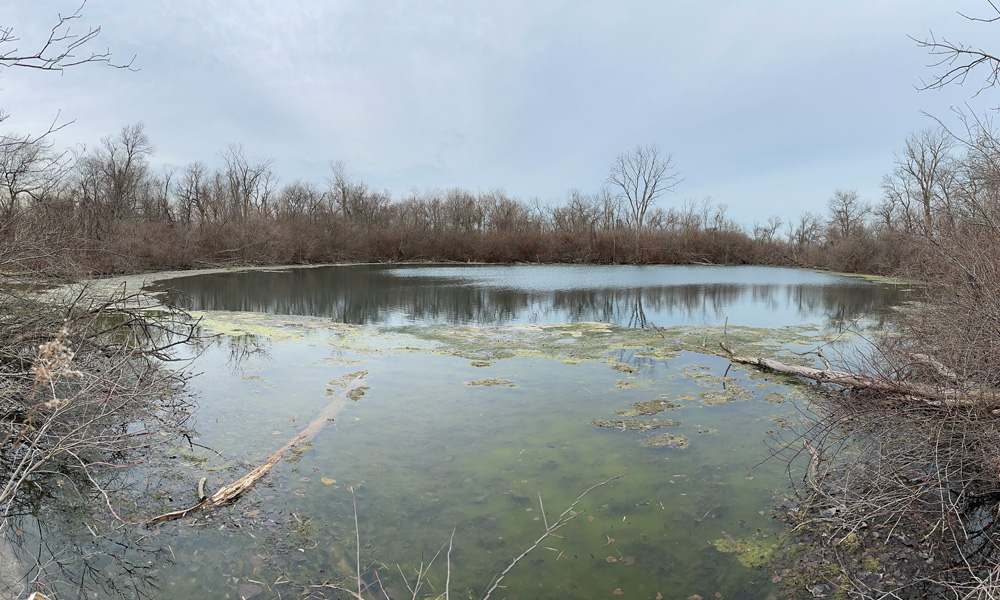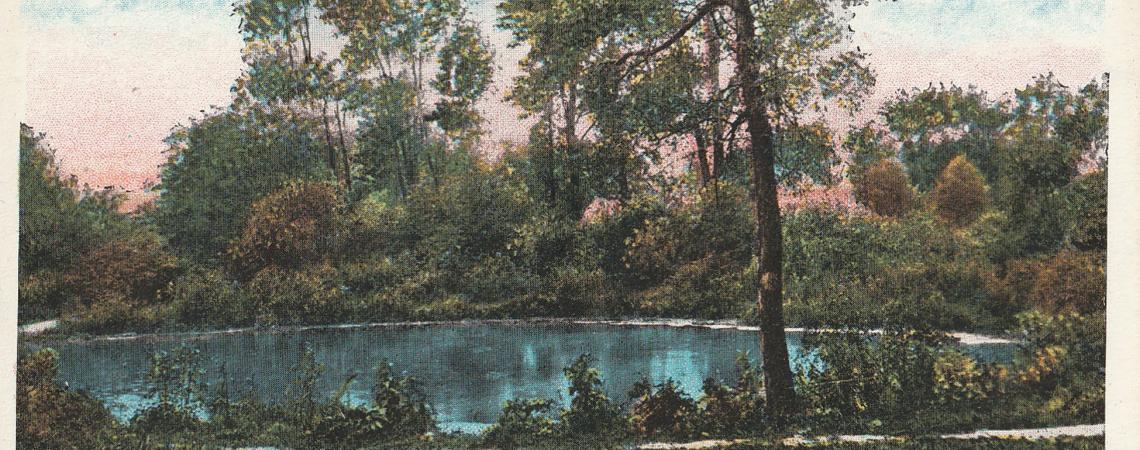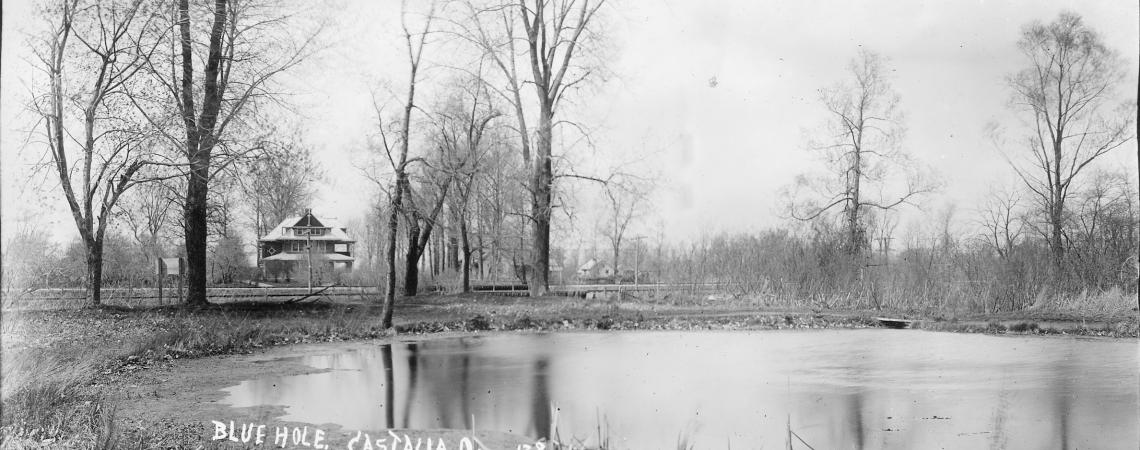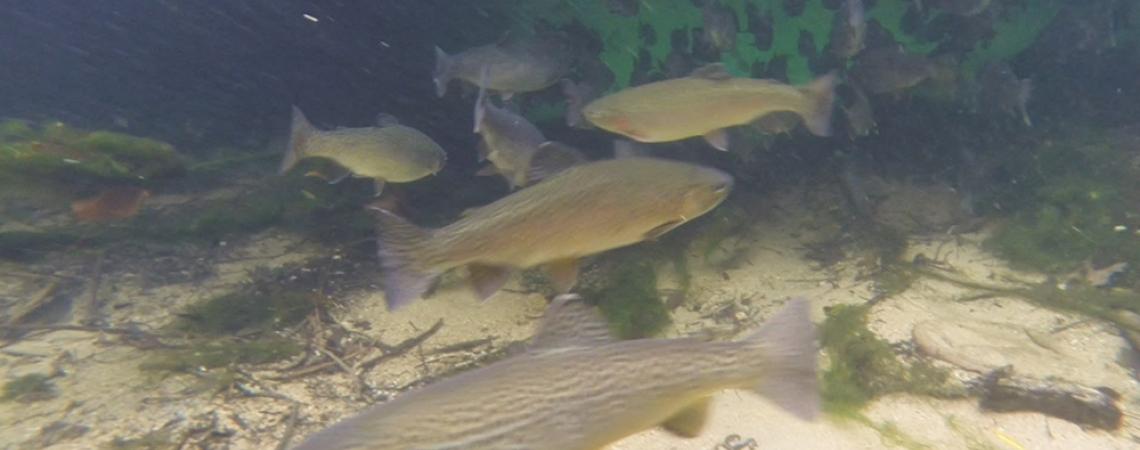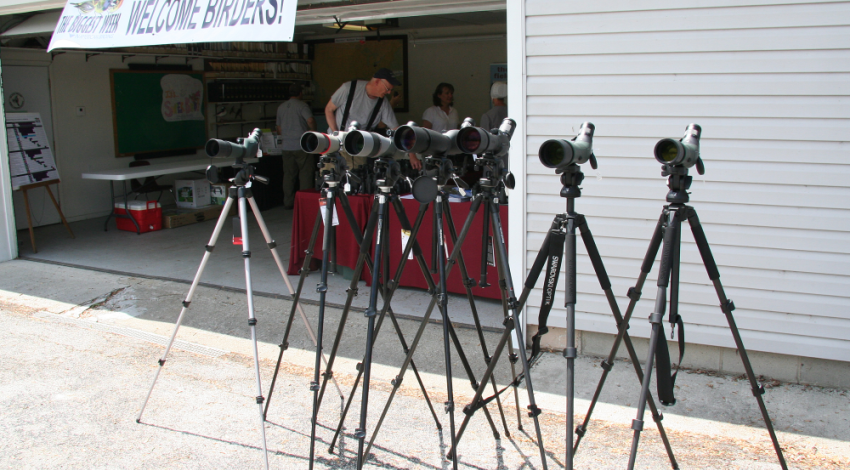At one time, the “blue hole” in Castalia was a big deal. Really big. From the 1920s until it closed in 1990, the quaint tourist destination drew as many as 165,000 visitors each year who traveled to gaze at the geologic curiosity. The deep artesian spring exudes an intense blue color, explained by scientific jargon about the sun, light spectrum, and water depth. The main thing is — it was really cool. Robert Rogers, the British Army officer who first recorded its sighting in 1761, described it as “boiling above the ground in a column 3 feet high.” From that first sighting, its attraction was a guarantee, though by the early 20th century, a series of underground cave-ins had turned the site into more of a large, serene pool than a boiling column of water.
But, hey, it was still cool.
This 1920s postcard showing the Castalia Blue Hole gives a sense of why it drew tourists from all around (photo courtesy of the Rutherford B. Hayes Presidential Library & Museums — Charles E. Frohman Collection).
Nancy Gurney remembers going to the Blue Hole on the occasional Sunday day trip to Castalia with her family in the 1950s, when she and her sister were young and her parents were farmers in Seneca County.
“It was so nice, all landscaped and beautiful, and it had flowers,” recalls Gurney, who now lives in Lakeside. “And there was this mystery of a deep hole with no bottom they can detect.”
Gurney, later a scientist, admits that, of course, there is a bottom — though to a child and tourist, the bottomless mystery thing was way neater.
Neat enough, in fact, to attract the attention of a blind ham-radio operator named Henry McFerren, who enlisted the help of other hams in an attempt to track the source of the Castalia Blue Hole’s water. The story was detailed in a 1941 Radio News magazine article.
McFerren launched a 2-pound rubber ball (with a homemade radio transmitter inside) into an underground stream deep inside Seneca Caverns, about 30 miles to the south near Bellevue. Radio operators on the surface tracked the transmitter more than a mile before losing the signal — though the experiment was considered a success: They did track the ball toward the Castalia Blue Hole.
The Castalia Trout Club has owned the site since 1879, and while it’s no longer a tourist attraction — it’s been closed for three decades — folks still show up all the time. Unfortunately, when they do, they’re trespassing. “When people blatantly disregard the ‘private drive’ and ‘do not enter’ signs, that does not fly well,” says Steve Sessler, the trout club’s manager.
While the original Castalia Blue Hole sends thousands of gallons of water toward Sandusky Bay via Cold
Creek every minute, there are several other, smaller blue holes in the area.
So what exactly is a blue hole? According to Douglas Davis, with the Ohio Geological Survey, a blue hole is created when the ceiling of an underground cavern — in this area, limestone or dolomite caves — collapses, creating an opening for pressurized groundwater deep below the surface to rise into the new opening.
“The area’s kind of unique because south of Castalia into Bellevue and beyond, there’s almost no creeks to speak of on the surface. It’s really crazy,” Davis says. “Most of the surface water drains into sinkholes.”
The area drained by sinkholes is more than 300 square miles. That water, Davis says, is what feeds a massive underground system that eventually sends water up through the series of blue holes in the area. The water flows at a constant temperature of 53 to 54 degrees year-round and, as a number of private clubs figured out in the 19th century, provides the perfect source for raising trout.
Luckily, the Ohio Department of Natural Resources got into the game around 1997 when one of those clubs folded and sold off its property — which included a blue hole. ODNR purchased the land and constructed the state-of-the-art Castalia State Fish Hatchery, where it now raises about a half-million rainbow and steelhead trout each year to be stocked in Lake Erie tributaries and in public lakes and ponds around the state.
The hatchery also fills the tourist void left when the Castalia Blue Hole was closed to the public. “A lot of people think this is the one they saw as a kid, so it’s kind of a daily explanation,” says Andrew Jarrett, the site’s superintendent. “I tell them, ‘This isn’t the same one, but it’s similar.’” He says about half the people who show up to the hatchery come to see the fish — the other half just want to see the natural oddity that is the blue hole itself.
Castalia Fish Hatchery, 7018 Homegardner Road, Castalia, OH 44824. 419-684-7499. The hatchery is open during the week for self-guided tours. Bring popcorn, cereal, bread, or other tasty trout chow. And a camera.
